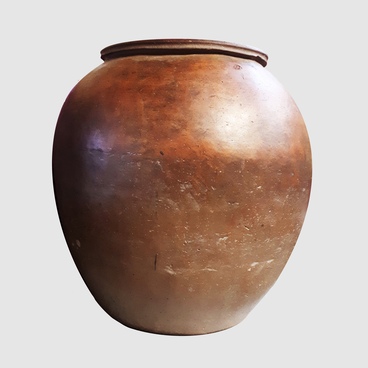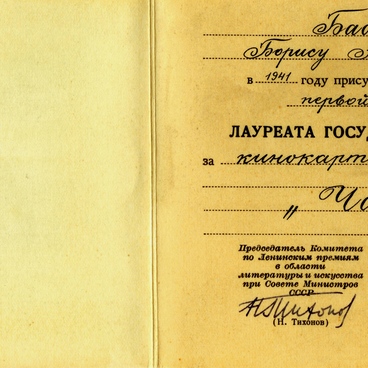At the exhibition Rarities of the Saratov Regional Museum, there is a Russian women’s costume on display from the second half of the XVIII century. It is assembled from items that were taken separately, and consists of a shirt, an oblique sarafan, a belt, a kokoshnik headdress, and necklaces. The shirt is sewn from white cloth sections, and has a straight cut. There are rectangular inserts visible on the shoulders - this is called a polika. A small, oval collar is scrunched up under the trimming. There is chain stitching sewn on each side of the collar. The sleeves are wide, with a square gusset, and scrunched up on the bottom under a narrow trim. The shirt is decorated with both hardanger and damask stitching. The polika inserts, the tops of the sleeves, and hems are decorated with ornamentation in the form of rhombuses, squares, and rectangles supplemented by stylized flowers and zigzags; with the middle part of the sleeves embroidered in the form of a stylized ‘Tree of Life’.
The sarafan has narrow straps, and is made of blue cloth sections with a slanted cut. The main feature of this slanted sarafan is two straight sections in the front and one in the back, connected together using slanted side wedge-shaped sections. The sarafan is fastened with 26 copper buttons, the chest and the middle seam are lined with a patterned silk ribbon, and the hem is trimmed with a lace. The lining is made of antique, handmade lining with ornamentation in the form of patterned stripes called ‘roads’. The yellow-and-brown belt is woven of silk threads, and decorated with a black-and-green diamond pattern. It is capped off with tassels made from uncovered warp threads. That kind of belt has been dubbed ‘Persian’. This kind of sarafan is considered to be holiday attire. The exhibit on display was brought to the museum from the village of Lysye Gori in Atkarsk District in Saratov Province.
The kokoshnik headdress is sewn from crimson velvet with a floral pattern. It is fashioned in the form of a small cap with a rounded bottom that is pointed at the back. There is a small incision at the back, in the lower part of the kokoshnik headdress; and a brocade ribbon is placed along the lower edge of the thin head band. A triangular patch of beige velvet is sewn into the lower part of the bottom. The kokoshnik headdress is lined with a red, finely patterned lining. The exhibit came to the museum from the collection owned by the Vasilchikov line of princes, who were members of the Saratov Scientific Archive Commission.
One necklace consists of 137 amber beads, which are made in the form of rounded, thin plates. Large beads are placed in the middle, and small ones along the sides. The second necklace is made of small blue, white, and red beads that have a helical pattern.
The sarafan has narrow straps, and is made of blue cloth sections with a slanted cut. The main feature of this slanted sarafan is two straight sections in the front and one in the back, connected together using slanted side wedge-shaped sections. The sarafan is fastened with 26 copper buttons, the chest and the middle seam are lined with a patterned silk ribbon, and the hem is trimmed with a lace. The lining is made of antique, handmade lining with ornamentation in the form of patterned stripes called ‘roads’. The yellow-and-brown belt is woven of silk threads, and decorated with a black-and-green diamond pattern. It is capped off with tassels made from uncovered warp threads. That kind of belt has been dubbed ‘Persian’. This kind of sarafan is considered to be holiday attire. The exhibit on display was brought to the museum from the village of Lysye Gori in Atkarsk District in Saratov Province.
The kokoshnik headdress is sewn from crimson velvet with a floral pattern. It is fashioned in the form of a small cap with a rounded bottom that is pointed at the back. There is a small incision at the back, in the lower part of the kokoshnik headdress; and a brocade ribbon is placed along the lower edge of the thin head band. A triangular patch of beige velvet is sewn into the lower part of the bottom. The kokoshnik headdress is lined with a red, finely patterned lining. The exhibit came to the museum from the collection owned by the Vasilchikov line of princes, who were members of the Saratov Scientific Archive Commission.
One necklace consists of 137 amber beads, which are made in the form of rounded, thin plates. Large beads are placed in the middle, and small ones along the sides. The second necklace is made of small blue, white, and red beads that have a helical pattern.

